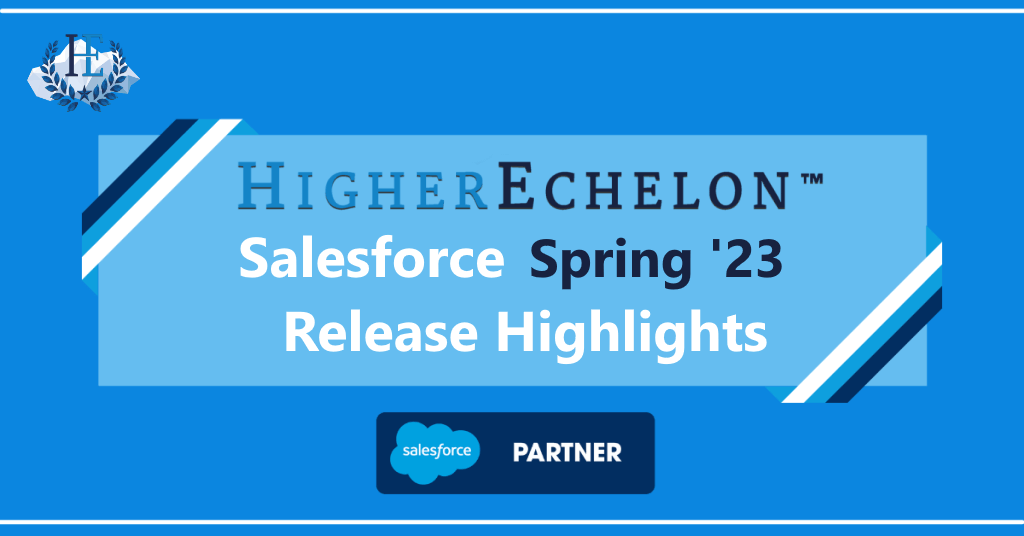
By Katie Levy
Though it may not feel like spring for some of us, it is time for the Salesforce Spring ’23 release! With enhancements, new features, community ideas delivered, and more, it is our first of three opportunities to take advantage of Salesforce’s free, real-time innovation in 2023.
New to the Salesforce ecosystem and not sure what a Salesforce release is? Salesforce delivers new features three times each year: Spring, Summer, and Winter. All Salesforce customers can take advantage of new features and use the same version of the platform. For the HigherEchelon team, release seasons mean we get to test out new features for our own Salesforce org and look for ways to help our clients make the most of their investment.
What is the best way to prepare for a Salesforce release? Begin by looking up your instance on the Salesforce Trust website to see when you can expect the release. (Don’t know your instance? Visit “Company Information” within “Setup” in your org.)
Next, review release notes (all 500+ pages!) to understand what changes are coming for Salesforce products you use. Finally, test new features in a sandbox. Upgrades are typically pushed 4-6 weeks ahead of a release, and for Spring ‘23, the preview begins on or around January 6, 2023. Depending on your instance, the Spring ‘23 release will be available over three weekends, beginning January 13, February 3, or February 10, 2023.
The release notes are jam packed with great feature announcements; it is tough to choose those we think are the most important and exciting, but we did our best. To find or share information about upcoming releases, and to collaborate with other customers and experts, check out the Release Readiness Trailblazers Community.
Be Ready for MFA: Auto-Enablement Starts with Spring ’23
Some time ago, Salesforce announced that beginning February 1, 2022, users would be contractually obligated to use multi-factor authentication (MFA). We first mentioned it in our Winter ’22 release highlights article. This requirement applies whether you use a username and password to log in or single sign on (SSO).
We are nearly a year past that date, and beginning with the Spring ’23 release, auto-enablement of MFA is coming on a rolling basis. If you are a Salesforce customer and do not have MFA enabled, now is the time. To avoid disruption, it is best to enable it before Salesforce does it for you. If you have questions, we’re here to help!
Create Personalized Report Filters
Have you ever tried to build an identical report for multiple people before? If so, you will love this new feature. With the Spring ’23 release, the ability to use a relative value on a user field, including fields like “Last Modified By” or “Owner,” will be available. Why is this such a great feature? If you are an Admin and have experience trying to build the same report for multiple users to show records they own, with Spring ’23, you will only have to build one.
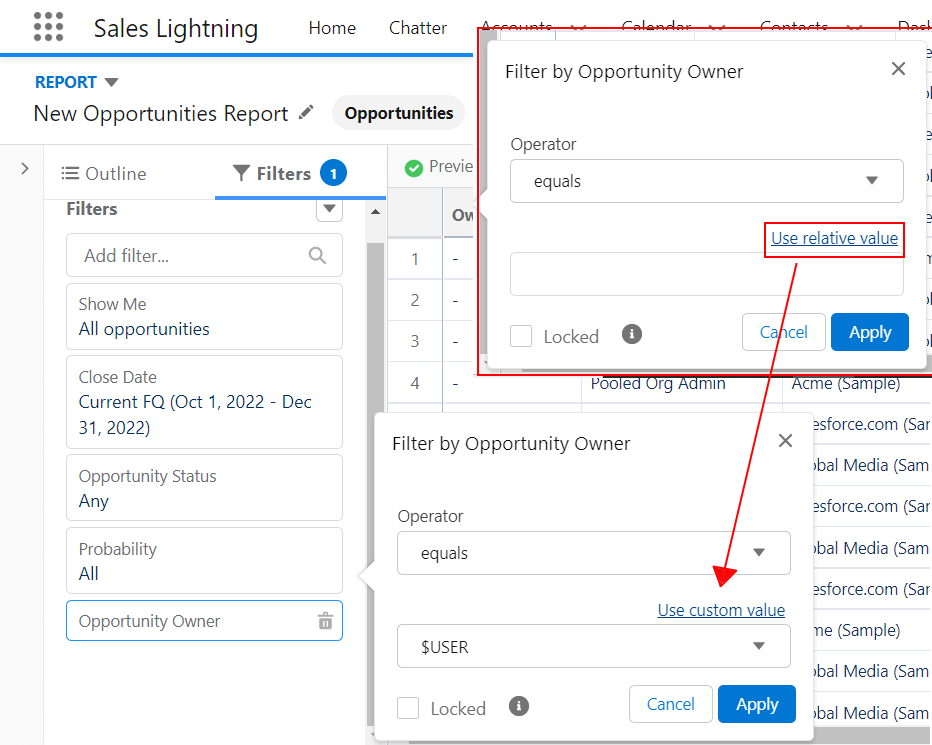
Import Contacts and Leads with a Guided Experience
Though some organizations restrict the ability to import data to avoid data cleanliness issues, a new import option makes bringing Contact and Lead data into your org much simpler for non-Admins. Under “Integrations” in “Setup,” a new “Basic Data Import” feature can be enabled to provide users a guided process to select how they want to import contacts and leads into Salesforce. Previously, the only option provided was the Data Import Wizard for users with permission to import data.
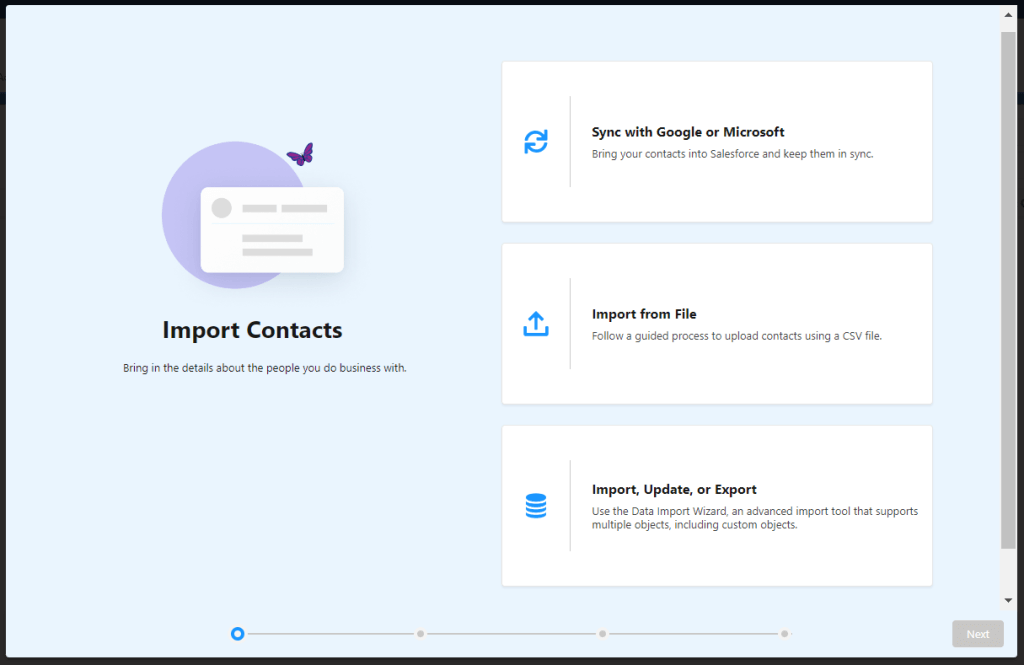
Clean Up Inactive Picklist Values (Generally Available) and Bulk Manage Picklist Values (Generally Available)
Two features we saw in beta in previous releases are now generally available, meaning they are out of testing and all Salesforce customers can use them. And they are both big time-savers for Admins. Together, these features allow Admins to delete, activate, deactivate, or replace multiple custom picklist field values at once where previously, these activities had to be completed one at a time.

Convert Processes to Flows with the Migrate to Flow Tool
Flow is the future of point-and-click automation in Salesforce. Prior releases made a tool available for Salesforce customers to begin migrating older automations achieved through functionality such as Workflow Rules to Flow. With Spring ’23, the updated Migrate to Flow tool can further help with migration of Process Builders. Of course, testing is paramount once a migration is complete. If you have questions, our team has completed several such migrations already; we’re here to help!
Take Advantage of Dynamic Actions for Standard Objects (Generally Available)
Dynamic actions allow Admins to assign the visibility of certain actions, buttons such as “Edit,” “Delete,” “Change Owner,” and more on a record in Salesforce, based on certain criteria. If you are a Salesforce user, you may not even notice or know that dynamic actions are being used; all you know is that you only see the buttons you should see.
Prior to Spring ’23, dynamic actions were only available on Accounts, Cases, Contacts, Leads, and Opportunities. Now, they are available for all standard objects and for custom objects. They can be assigned in the Lightning App Builder after the “Upgrade Now” button is clicked.
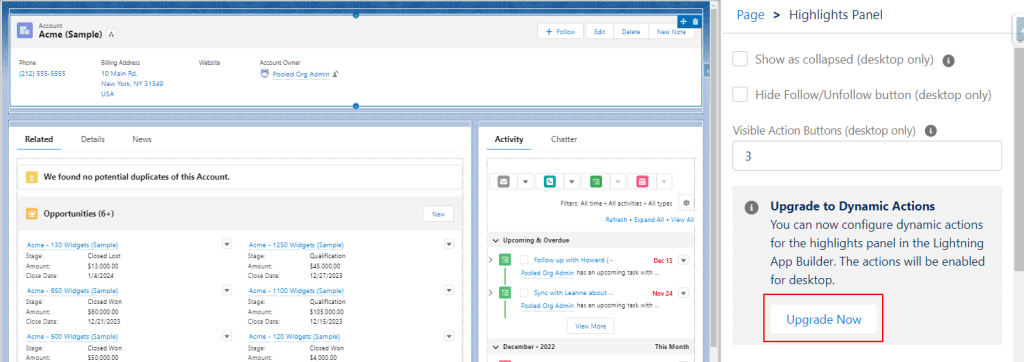
See Element Descriptions on the Flow Canvas and Get a Streamlined Flow Element Menu
Whether you are a newer Admin getting to know Flow or a seasoned pro, you’ll love these user interface enhancements. First, with Spring ’23 comes the ability to see the user-provided description in a Flow element by hovering over a new icon rather than having to open the element itself. (It is best practice to include descriptions on flow elements, custom fields, custom apps, and more to help others reviewing configuration decisions.)
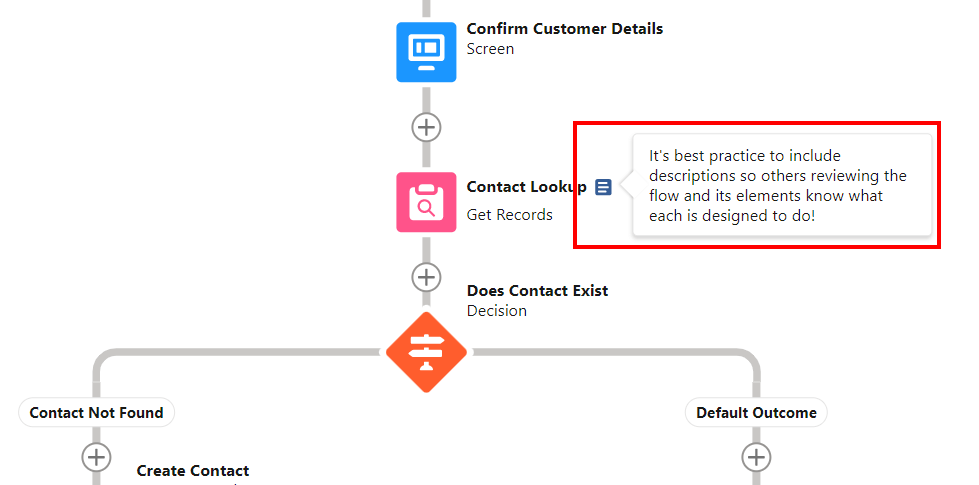
Second, the Flow element menu features element descriptions in tooltips, essentially help text for Admins working to determine what element to choose.
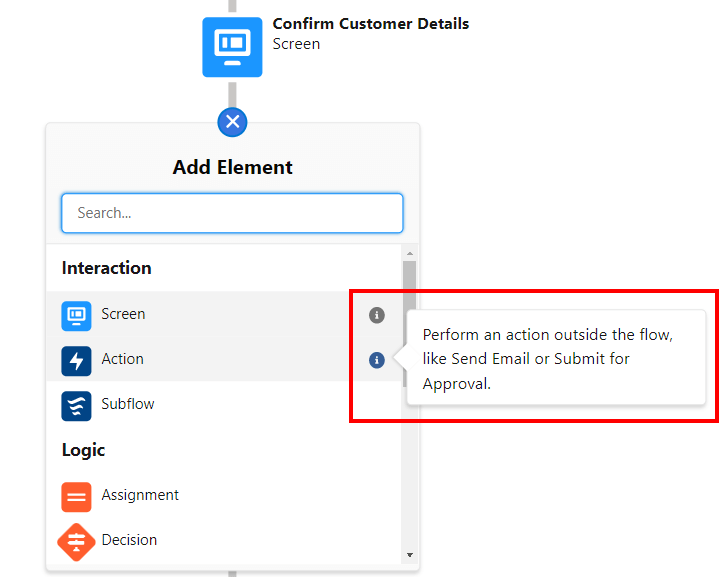
Select Multiple Records from a Table in a Flow Screen (Generally Available)
First announced in Winter ’23, the ability to use data tables in Flow is now generally available. Admins, this means you can now let users select records from a list, see a list of records, or display records that meet a set of criteria. Prior to this being released, meeting similar requirements meant using code, though there is still no option to edit values directly in the data table.
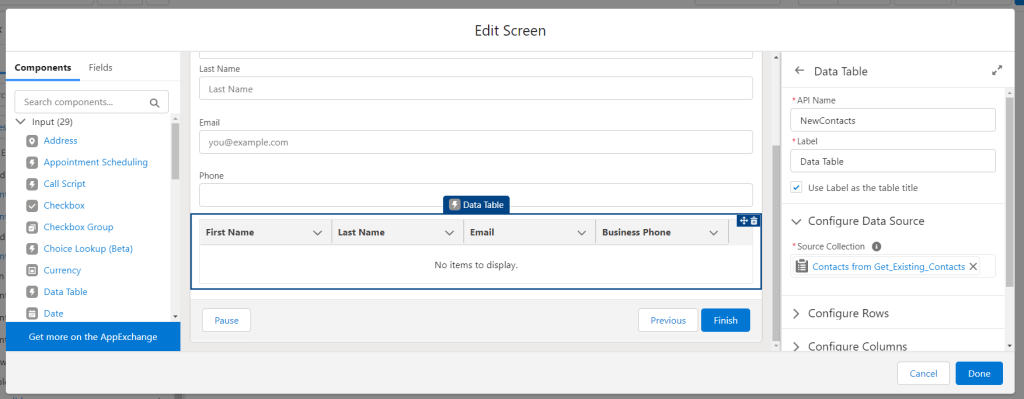
Learn more about what new features are available with the Spring ‘23 release through the release notes, and contact us if you’d like to learn more about how HigherEchelon partners with organizations to help quickly and successfully implement Salesforce. (We’re good at improvements in existing orgs, too!)
Katie Levy is a 9x certified Salesforce Consultant with HigherEchelon, Inc. and has a passion for finding and sharing the latest and greatest Salesforce features.
Client Review: 5/5 ★ ★ ★ ★ ★
HigherEchelon’s team is extremely professional and high caliber. They are very knowledgeable on the Salesforce platform, while offering solutions to business problems. That’s a hard mix as most partners tend to be over indexed in one particular way. HigherEchelon knew how to leverage the platform to solve our business needs.
– Client, Financial Services Sector, public review on Salesforce AppExchange